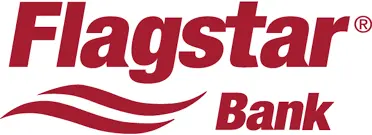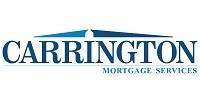How to Get a VA Loan: 6 Steps
The VA loan program offers several benefits, and if you’ve never taken advantage of them, you may be wondering how to get a VA loan. The good news is that, once you understand the process and your options for accessing this program, it’s fairly easy to apply for a VA loan. You can apply online, by mail or at your lender’s local branch.
We’ll cover what you need to know to become a homeowner using your VA loan benefit, including how to shop for the best rates and VA lenders.
Step 1: Confirm your VA loan eligibility
You need a VA-issued document known as a certificate of eligibility (COE) to prove to lenders that you are eligible for a VA loan. You can request a COE online or by mail, or ask your lender to request one for you.
Am I eligible to get a VA loan?
Whether you’re eligible for a VA loan depends both on your service record and whether you’ve used your VA loan benefit before. The specific benefit you exercise when taking out a VA loan is known as your VA loan entitlement, and you must meet the minimum service requirement to have any VA entitlement.However, if you’ve used your VA loan entitlement before, you may not have enough left to purchase another home. For example, if you have another VA loan or if you paid one off but the entitlement hasn’t been restored yet, you may have a partial entitlement. Your COE will list how much entitlement you have.
Step 2: Learn the VA loan requirements
VA loan requirements are generally more lenient than the requirements for conventional loans and other government-backed loans such as FHA loans and USDA loans.
Unlike other loan programs, VA loan limits don’t apply to every borrower. The amount you can borrow may be limited if you don’t have full VA loan entitlement.
VA loan requirements
1. Borrower requirements
The VA loan borrower must:
- Pass a CAIVRS check (that is, have no history of defaulting on federal debt)
- Show two years of employment history
- Have a maximum 41% debt-to-income (DTI) ratio
- Have a minimum amount of residual income, which is cash left over after you pay your bills each month. The exact requirement varies according to where you live and your family size.
- Pay a VA funding fee at closing
2. Property requirements
The VA-financed property must:
- Be your primary residence
- Meet the VA Minimum Property Requirements (MPRs), which can vary depending on where the house is located.
- Undergo a VA home appraisal
- The home’s price can’t exceed VA loan limits (only if the borrower is subject to VA loan limits)

Step 3: Gather your financial documents
Here are the documents you’ll typically need to get a VA loan:
- Certificate of eligibility (COE)
- DD 214 (discharge or separation paperwork)
- Leave and earnings statement if you’re on active duty
- Two years of W-2s
- 60 days of bank statements
- Pay stubs that cover the last 30 days of income
- Letters of explanation for any large deposits in asset accounts, gaps in employment or credit issues
Step 4: Get preapproved while house hunting
Mortgage preapproval is when you submit a preliminary mortgage application to a lender and, in return, receive a preapproval letter that states how much the lender is willing to lend to you. A preapproval letter may also include an interest rate, although this rate isn’t guaranteed — it’s just an estimate.
Preapproval can also help clarify your budget for a home purchase and show sellers that you’re a serious buyer, which can make any offers you put in on a home more competitive. Once you’ve found a home you want to buy and put it under contract, you can move ahead to the next step.
How long does it take to get VA loan preapproval?
Getting preapproved is usually fast and easy, and can often be done online. It may take less than a day or over a week to hear back, depending on your lender.
Current VA mortgage rates
Right now, 30-year VA loan rates are 6.44%, while comparable conventional loan rates are 7.09%. Current average rates are calculated using all conditional loan offers presented to consumers nationwide by LendingTree’s network partners over the past seven days for each combination of loan type, loan program, and loan term. Rates and other loan terms are subject to lender approval and not guaranteed. Not all consumers may qualify. See LendingTree’s Terms of Use for more details.
Step 5: Shop around for VA mortgage lenders
To get the best VA loan rate on your mortgage, it’s crucial to shop around among several lenders and compare. According to a LendingTree study, borrowers who shopped around saved more than $76,000, on average, over the life of their loans.
To compare VA lenders, you should put in three to five applications on the same day. (If you want to include a lender you already have a preapproval from, you can typically submit additional documentation to convert the preapproval into a loan offer).
Once each lender sends you a loan estimate, sit down with all of them in front of you and compare the loan terms you’re being offered. In particular, you should look at the following for each offer:
- Interest rate
- Annual percentage rate (APR)
- Mortgage discount points
- Closing costs
The best VA mortgage lenders

Step 6: Close on your VA loan
As long as none of your financial details have changed since you obtained your loan approval or preapproval, it should be simple for your lender to confirm any outstanding details and provide you with closing documents. The closing process on a VA home loan is similar to any other mortgage closing for a purchase or a refinance. Here are the steps you need to take to close on a VA loan:
- Review your closing disclosure, which will be provided at least three days before your closing.
- Get the home appraised by a VA-approved appraiser.
- Obtain proof of your homeowners insurance policy.
- Do a final walkthrough of your home before the closing with your real estate agent.
- Confirm with your lender how much money you’ll need to bring to the closing and how to transfer it.
- Confirm the closing location, which could be at a title company, an attorney’s office or an escrow company.
- Bring a cashier’s check or wire information for your down payment funds to the closing, as well as a government-issued ID.
- Review and sign all required documents during the closing.
What is a VA amendatory clause?
What are the closing costs for a VA home loan?
Closing costs for a VA home loan are similar to any other mortgage and range from 2% to 6% of the loan amount. However, lender fees for VA loans — which are one part of closing costs — are capped at 1% of the loan amount.
VA home loans also require a funding fee of 0.5% to 3.3% of the loan amount. The exact amount you’ll have to pay is based on your down payment amount, if any, whether you’ve ever used a VA loan before and whether you’re purchasing or refinancing the home.
Closing costs for a VA loan include:
- VA funding fee
- Origination fee charged by your lender
- Mortgage points for a lower rate
- Credit report fees and the balance of any credit card or judgment to pay off to quality
- VA appraisal fee
- Homeowners insurance
- State and local property taxes
- Title insurance
- Recording fees
Can I get a no-closing-cost VA loan?







